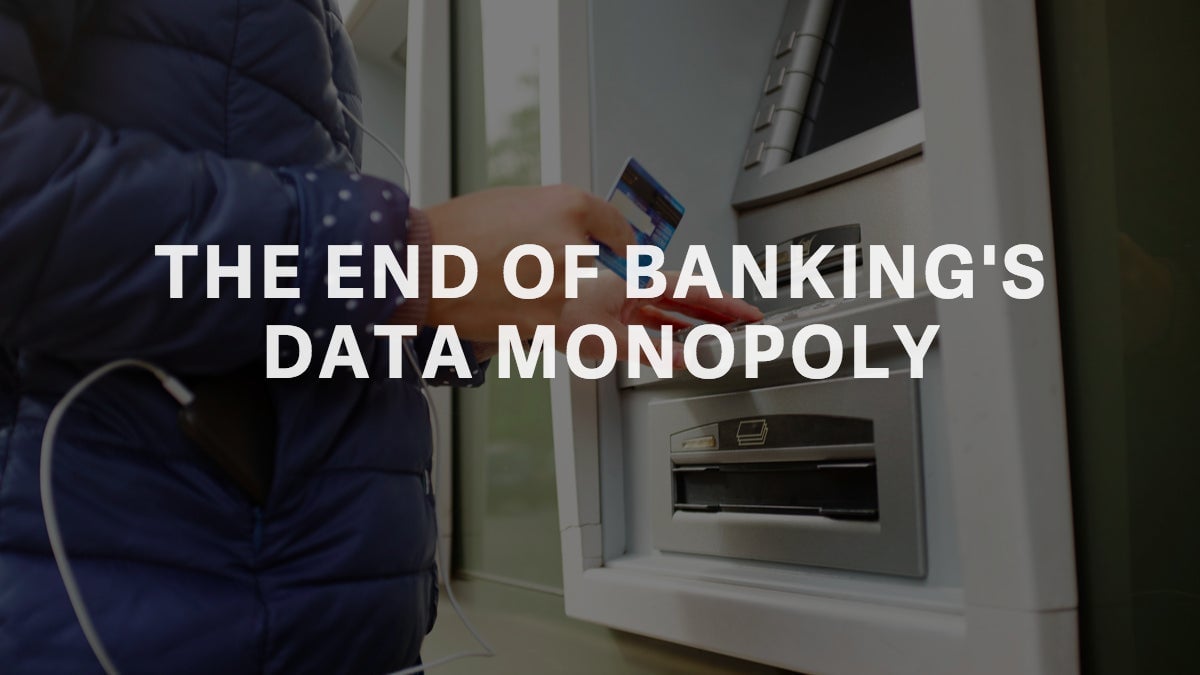Will you visit your bank branch less often in the future?
For Europe’s financial and banking industry, December 2017 will represent something of a reckoning: it’s the deadline by which countries in the European Union will be required to enact the revised Payment Services Directive (PSD2). Forming the foundation of the “open banking” movement along with the EU’s General Data Protection Regulation, the law will compel banks to make much of their valuable data shareable with designated third parties and to allow new players into the market. Around the world, financial analysts and politicians will be watching, looking for clues about how the shift might affect their operations or portend changes coming to their own nations.


For Europe’s financial and banking industry, December 2017 will represent something of a reckoning: it’s the deadline by which countries in the European Union will be required to enact the revised Payment Services Directive (PSD2). Forming the foundation of the “open banking” movement along with the EU’s General Data Protection Regulation, the law will compel banks to make much of their valuable data shareable with designated third parties and to allow new players into the market. Around the world, financial analysts and politicians will be watching, looking for clues about how the shift might affect their operations or portend changes coming to their own nations.
It will be the culmination of a groundbreaking shift instigated by the EU to redesign the banking landscape into a more competitive, innovative, and user-friendly space. The banks, FinTech firms, and retailers who are able to spot the opportunities in this change could thrive in this 21st-century digital economy, with everything from how we pay for media to insurance ripe for disruption. Those unable to see possibilities for growth may be left in the dust.
“Banks recognize that this progress is inevitable,” says Imran Gulamhuseinwala, Partner, Financial Services Office, Ernst & Young LLP. “It’s inevitable because across Europe and across the world, there’s a growing recognition that customer data belongs to the customer and not to the institution.”
If traditional banks stand to potentially lose the most, customers appear to be in a position to gain the most. Thanks to the newly accessible data, FinTech firms and software developers will be able to make payment processes increasingly frictionless and create an exciting array of products and services tailored specifically to the needs of individual consumers. Due to its flourishing FinTech scene and an aggressive line taken by its Competition and Markets Authority, the UK in particular is poised to benefit as it has pushed to introduce standards that would require banks to share data with the highest level of transparency and compatibility.
Expect to see a deluge of “price comparison” models, so familiar to how we shop for flights today, applied to everything from banks themselves to energy providers. Developers could create apps that would streamline accounting for small businesses, allow marketers to better understand when, how and why target consumers shop, or give lenders a better picture of the habits of an applicant. The rapid rise of smartphone users—an estimated 6.1 billion by 2020—should also accelerate this growth, creating a massive market for FinTech initiatives enabled by open banking. Gulamhuseinwala recalls recently hearing about a FinTech that allows for seamless mobile money transfers from as far as the UK to Mozambique in literal minutes and for a fraction of the cost that a traditional wiring company might charge today.
The question is, what will determine the winners and losers? Once again, consumers should benefit as PSD2 streamlines payment processes, empowering retailers and merchants to securely connect to and initiate payments directly from consumers’ banks with the permission of the consumer, cutting out middle men like credit card networks and merchant acquirers from online transactions.
Banks themselves could also initially be at a potential disadvantage, as open banking encourages and allows for apps that let consumers operate accounts across multiple banks through a single portal, empowering the third parties and FinTechs who are developing these apps and eroding the influence of banks.
These factors, as well as the technology, risk and liability issues, have led to a degree of uncertainty in the banking world. Some institutions regard the open banking phenomenon as primarily a compliance issue—a set of regulations that are painful but necessary, but that otherwise do not distract from conducting business as usual. While this perspective may vouchsafe for comfort and security in the present, industry analysts see it as the kind of move that in the future could reduce the role of banks and diminish customer franchises.
“By reducing the barrier to entry to financial services, open banking could make some players even stronger, and make other players utilities,” says Gulamhuseinwala, pointing to the prospect of banks that can’t adapt one day becoming mere “pipes” for data.
Ultimately, these changes may also be advantageous to some banks in the long term view. “There’s tremendous opportunity for any bank now to get a holistic view of its customers across all different products and services,” says Gulamhuseinwala. Already, some enterprising banks are shifting towards becoming digital platforms, using their size, reach, and massive customer bases to operate as ecosystems fostering the growth of aggregators and FinTechs. If one views disruption as inevitable, banks may one day be grateful for the initially painful shove of PSD2 and related directives, forcing them to build the foundations of the 21st-century digital economy.
EY’s Better Questions series asks some of the tough questions faced by today’s global businesses. Better questions. Better answers. Better working world. Discover more. #BetterQuestions
This article was produced on behalf of EY by Quartz creative services and not by the Quartz editorial staff.